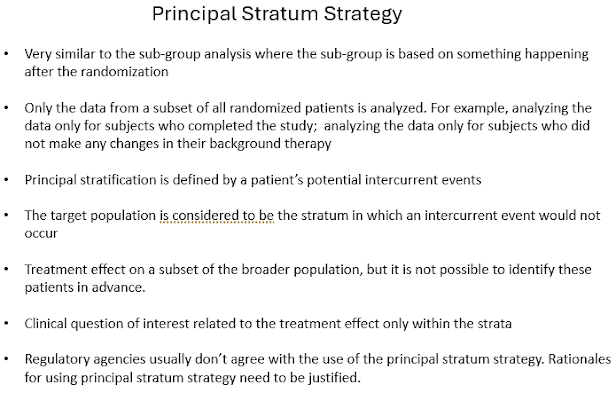CQ's web blog on the issues in biostatistics and clinical trials.
Sunday, July 28, 2024
Five most frequently used strategies for handling intercurrent events
The original ICH E9 guideline, titled "Statistical Principles for Clinical Trials," was established in 1992. An updated version, ICH E9 (R1), was released in November 2019 and is known as the "Addendum on Estimands and Sensitivity Analysis in Clinical Trials to the Guideline on Statistical Principles for Clinical Trials." Since its publication, regulatory agencies have gradually adopted the ICH E9 (R1) guidelines. As a result, regulatory reviewers commonly require sponsors to define estimands, identify intercurrent events, and propose strategies for handling these events in the study protocol and/or the statistical analysis plan (SAP).
The ICH E9 (R1) guideline, along with its accompanying training slides, provides detailed information on the concepts of estimands, intercurrent events, and various strategies for managing intercurrent events. The five most commonly used strategies for handling intercurrent events are: treatment policy, Composite, hypothetical, while on treatment, and principal stratum.
Subscribe to:
Post Comments (Atom)






No comments:
Post a Comment